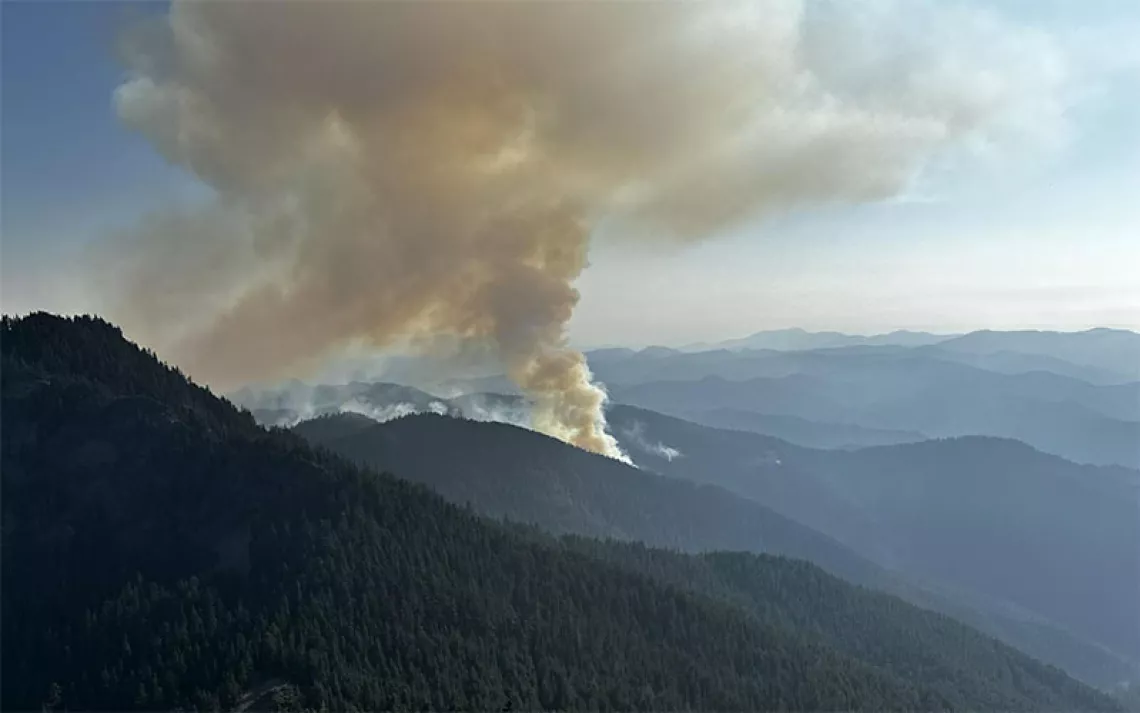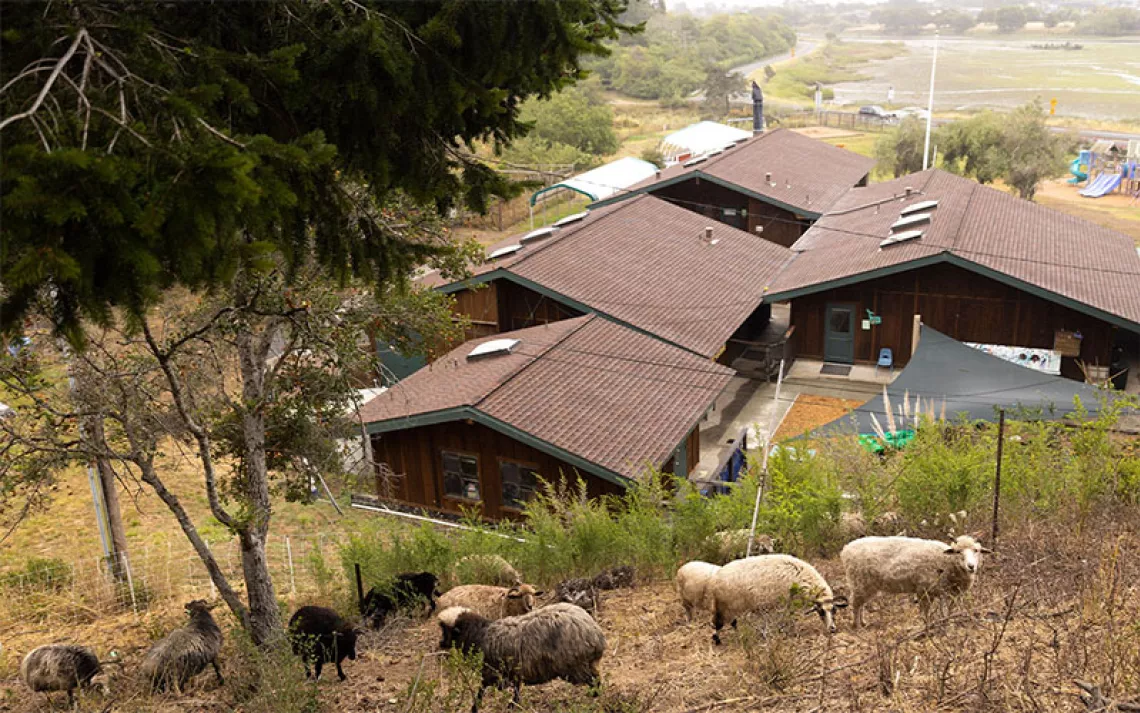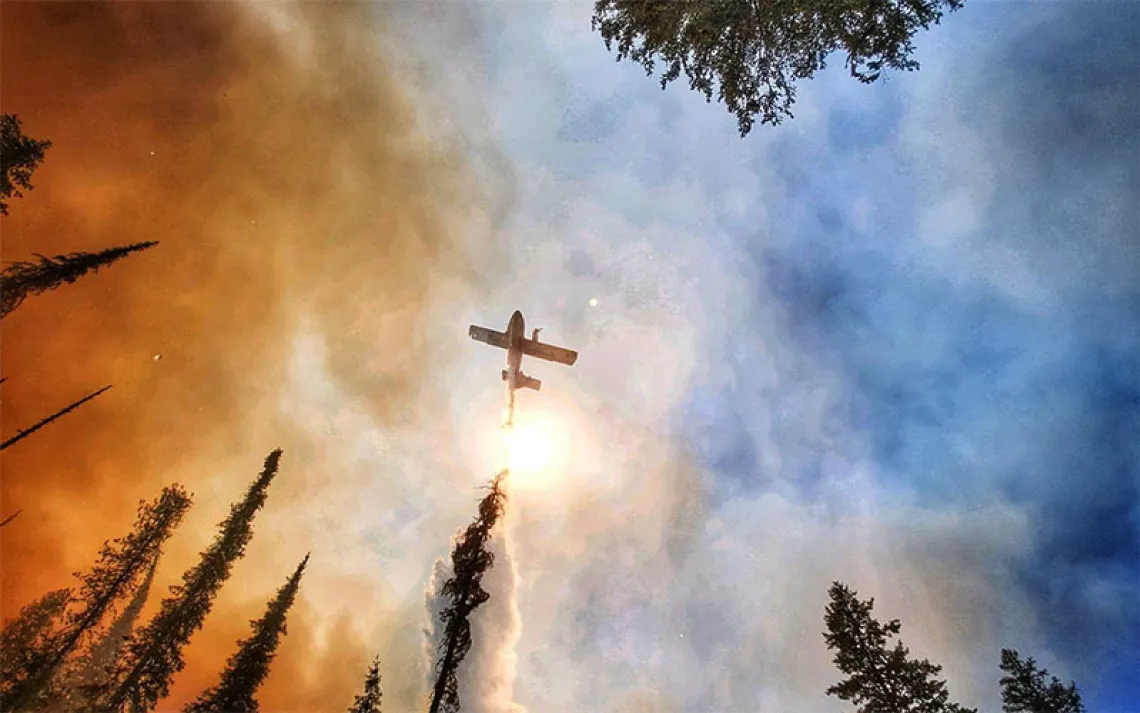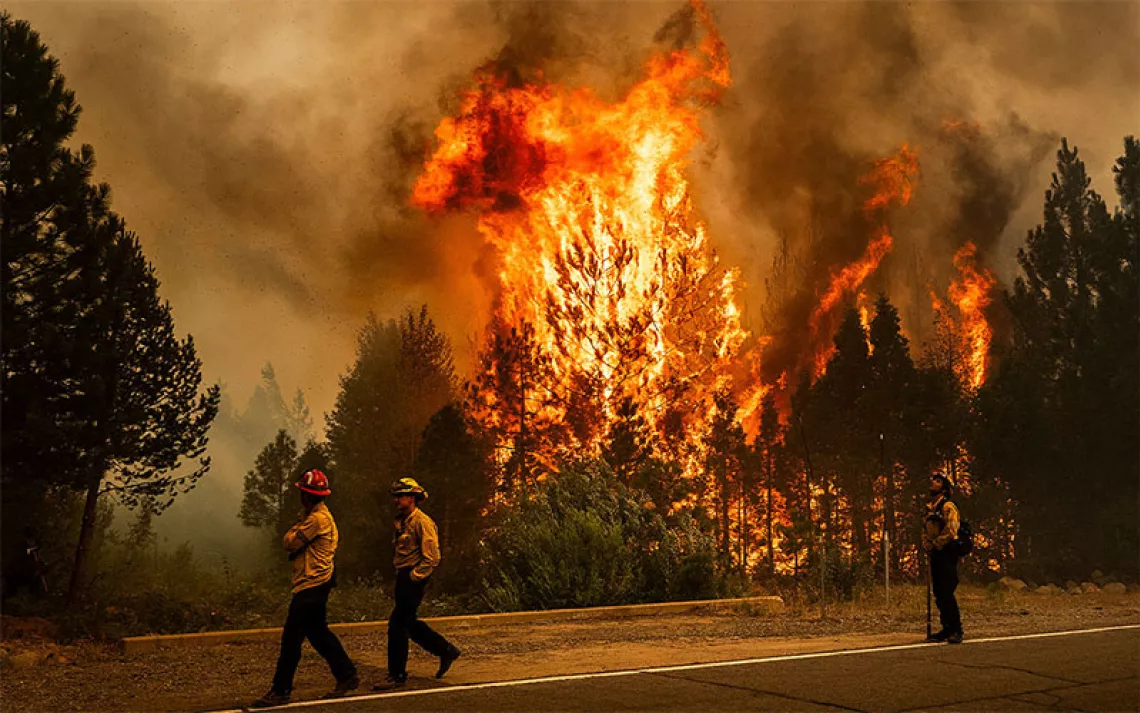The Worst Forest Fires You’re Hearing Nothing About
Once again, the Brazilian Amazon is in flames

Photo by Gustavo Basso/NurPhoto via AP
The skies are chalky, tinged the colors of copper, cobalt, ash, and rust. The air stings the lungs. Even if you don't see the fire or feel its heat, you can smell it. The smoke is oppressive, hanging across the horizon like a blanket.
The scene could be a description of the apocalyptic skies up and down the West Coast the past week: The San Francisco Bay Area, Los Angeles, Eugene and Ashland in Oregon. But it’s not. It’s the Brazilian Amazon and the Pantanal, the largest wetlands in the world.
And unlike the conflagrations in North America, the fires in Brazil are burning by design.
The fires have largely been set by ranchers, farmers, and land grabbers, who are determined to transform once-intact jungle into pastures for cattle or fields for growing soy. The land grabbers flip the landscape as if they were real estate speculators remodeling an old home in a gentrifying neighborhood. Only in Brazil, it's the so-called lungs of the planet they are seeking to transform.
Last year, the raging fires in Brazil made international headlines. The worst Amazon fires in almost a decade became the top story in the world for weeks. Protests against government inaction ignited across major global cities—São Paulo, Rio de Janeiro, Brasília, London, Geneva, Paris, Berlin, Toronto. Climate activist Greta Thunberg called for action. French president Emmanuel Macron and German chancellor Angela Merkel threatened to block the EU-Mercosur trade deal if Brazilian president Jair Bolsonaro did not move to combat the blazes.
This year, the fires are even worse. But the international attention and media coverage has, until very recently, been largely absent.
In the first 10 days of September, there were 12,412 distinct fires blazing in the Amazon region, according to Brazil’s National Space Research Institute, INPE, which uses satellite imagery to monitor Amazon fires and deforestation. That’s 85 percent more fires than the same period in 2019. Just as worrisome is the fact that, compared with last year, many more of the fires are in virgin forests, as opposed to already cleared lands.
“We are seeing levels of fires in the Amazon which are much greater than last year,” Ane Alencar, the science director at the Amazon Environmental Research Institute, told Sierra. “We’ve had roughly three days in a row this month with more than 2,000 distinct fires each day. That’s intense.”
The reality in Brazil’s Pantanal wetlands is even worse, with fires set by ranchers and landowners blazing out of control because of abnormally dry weather. More than 10 percent of the wetlands have gone up in smoke this year alone, as the fires have consumed an area larger than New Jersey, according to a NASA analysis. This is almost 60 percent more area burned than in the drought-ridden fire season of 2005. Scientists have called it “unprecedented.”
Why has this not led to anything even remotely similar to last year's widespread international outcry?
The most obvious answer is the COVID-19 pandemic that has transformed the world. The disease overshadows the Amazon forest and everything in it. It’s as if the flames engulfing the once-pristine jungle are the sign of just one too many disasters for us to fathom.
“It’s so many things for us to handle at the same time,” Adriana Ramos, the coordinator of policy and rights program at the Social Environmental Institute, ISA, told Sierra. “The situation is complex and serious.”
Brazil has the largest number of COVID-19 deaths after the United States. And Indigenous communities have been hit particularly hard. More than 31,000 Native people in Brazil have been infected and nearly 800 have died, including at least 170 Native elders.
Indigenous leaders from numerous tribes in recent months told me that the fires were just one of multiple crises impacting their communities. They’ve had to also focus on protecting their people from COVID-19 and defending their territories from violent outsiders. Land invaders have significantly increased deforestation in numerous Indigenous areas amid the pandemic.
Anderson Borges, a professor of rural development at the Federal University of Pará, has seen the blazes up close this year while in the field. The skies over his home, in Altamira, have turned abnormally smoky and dark. He told Sierra that during this time of the year, local leaders often take action against the fires, but “coronavirus has paralyzed some people's ability to travel to the location of the illegal fires to record or denounce them.”
In the same way, the pandemic has made it more difficult for media outlets to send reporters to the region, due to health concerns. “The world is passing through the pandemic, the global financial recession, the US election, which is something that people are watching and which is important for the world and in particular, for Brazil,” Alencar said. “These other issues are dominating the international agenda, and this has meant that the Amazon has received less attention.”
João Feres Jr., the head of the Manchetômetro, a media watchdog group at the State University of Rio de Janeiro, blames Brazilian media outlets and their tight relationship with the agribusiness industry—which, at least indirectly, both fuels and benefits from the fires—for tiptoeing around the disaster.
"The media in Brazil isn’t concerned with the environment, and it has very little investigative power," Feres told Sierra. "It’s run by a few powerful groups. It’s conservative, and it has strong ties to the agribusiness. So they don’t have much interest."
The Brazilian media is also reactive. Last year, the fire story didn’t really take off as a national issue until smoke from the fires sailed more than a thousand miles across the country, bathing São Paulo, Brazil’s financial heart, in darkness. Street lamps flickered on in mid-afternoon, which forced national news outlets to wake up.
“Last year, the story was new. People used the issue as a way to push and denounce the government,” Ramos said. “Right now, it has been normalized. It’s clear that this is part of the government's project to open up the [Amazon and Pantanal] regions. Part of the press, which is more compromised with supporting the president’s agenda, has begun to normalize the issue.”
Bolsonaro has made a show of signing moratoriums that ban fires in both the Amazon and Pantanal. But his government has also gutted environmental agencies and government monitoring. And his administration has essentially suspended fines for environmental violations like setting fires.
Bolsonaro has also cut the federal government’s firefighting budget by 58 percent over the past year, despite the rising fires, in a clear sign that the blazes actually benefit his development plans in the region. In late August, the Environment Ministry announced that it would have to temporarily suspend operations combating the blazes before it reached a deal to secure emergency funds.
Meanwhile, Bolsonaro continues to spin his narrative that the extent of the fires is fake news, that environmentalists are behind the blazes, or that it’s an international conspiracy to tank his government. In July, he called Europe an “environmental sect.”
“If we do not push forward with the development of the Amazon, it will be an eternal land with no prospects for the 25 million Brazilians who live there,” said Vice President Hamilton Mourão on September 8. He stressed the need to legalize mining in Indigenous territories, as a way of confronting the widespread illegal mining taking place on Native lands. As many as 20,000 illegal miners are extracting minerals on Yanomami territory, near the border with Venezuela.
For environmentalists, the anti-Indigenous and anti-environment agenda of the current administration is perhaps the most concerning. Despite last year’s international outcry, the Bolsonaro agenda continues, unabated, in the Amazon.
“The government has a policy of detonating these territories in order to weaken these communities. The pandemic and the out-of-control fires only strengthen the government strategy,” Ramos said. “It’s really hard to think about how to unite forces and confront it.”
 The Magazine of The Sierra Club
The Magazine of The Sierra Club



